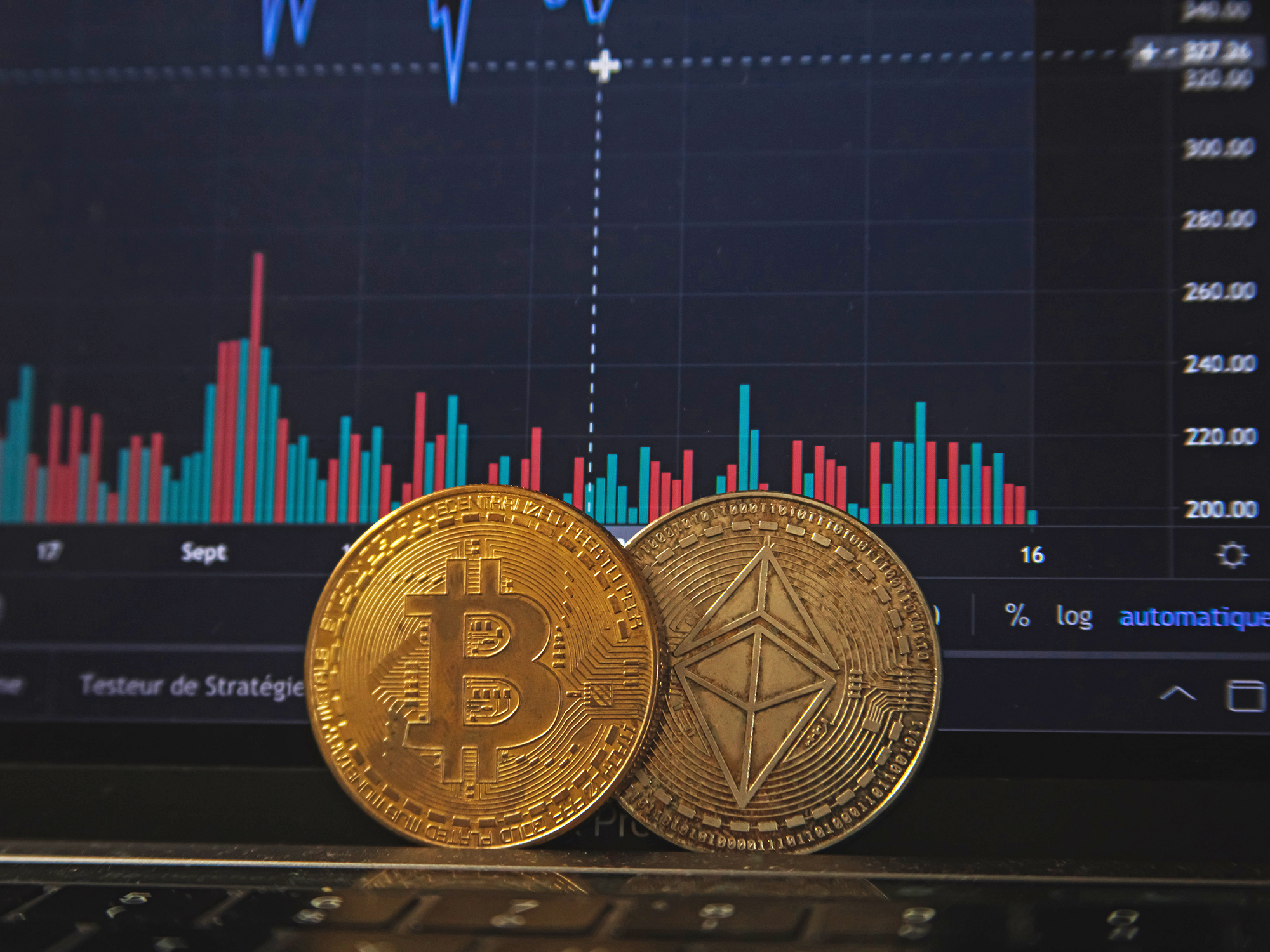

The truth is that anyone can get involved with cryptocurrencies, but if you’re new to them, it can seem like a daunting field, full of indecipherable jargon and security risks. Still, this is nothing that some research can’t solve.
Before you get started, it’s worth emphasizing the volatility of cryptocurrencies. It’s not a good idea to invest huge sums that you can’t afford to lose, especially in the short term, as exchange rates can fluctuate quickly and significantly. We recommend you spend several months just watching the markets before investing in them.
How cryptocurrencies work
There are many different cryptocurrencies, the most popular being Bitcoin and Ether, but they’re all based on similar technology. These currencies are digital, so there are no notes or coins to deal with. They’re also protected by cryptography (hence the name), which means transactions are encoded in such a way that counterfeiting is highly complicated.
Most cryptocurrencies are built on what is known as a blockchain, which is a term you’ll come across a lot. This is often described in simple terms as a digital ledger: It shows all past and current transactions and protects the security of the exchanges. Blockchains are anonymous—they don’t show details of the buyer or what they’re buying, but you can easily see the flow of crypto (how assets move from hand to hand). No one can edit this record without breaking the entire system.
[Related: These companies claim blockchain could help fight climate change]
This strong security is one of the key benefits of cryptocurrency. But that doesn’t mean there’s no risk—major hacks and thefts do happen, mainly due to security vulnerabilities in exchanges, or through scams that trick users into revealing login information. One way to think about it is like Gmail: Google deploys high-level security measures to make it very hard to hack into its servers, but someone can still trick you into sharing your username and password.
Cryptocurrencies are also decentralized, which means they’re not stored in any single location or controlled by any government. This has its pros and cons—while they are free from the interference of authorities and banks, they’re also highly volatile and not officially recognized by most institutions. You shouldn’t get into cryptocurrency without understanding that exchange rates between crypto and traditional money can go up and down very quickly.
That’s crypto 101 for you. Still, you can dig deeper and you’ll find the nuances and differences between currencies. You can find plenty of information online about the different cryptocurrencies, their current exchange rates, and whether they’re the right investment for you.
How to get cryptocurrency
To get many of the most notable cryptocurrencies, people have to mine them. This means they get crypto as a prize for validating security on the network, a job that gets more and more complicated as time goes by and the blockchain grows. To do this validation, miners require high-powered computers, which is why you’ll see huge Bitcoin farms packed with machines to work through the necessary calculations around transactions.
At this point, validating demands a large amount of computing power, not to mention a considerable amount of energy. This makes setting up a mining farm very expensive and no longer worth it for individuals to get involved. There’s also the question of the environmental impact of these digital coins—even the greener versions—which may motivate more climate-conscious users to stick to buying and selling.
The cryptocurrency apps you need
With mining no longer an option for most people, the majority of cryptocurrency apps focus on buying and selling. At one end of the scale are the apps that give you the most control over your purchases, with more currencies and more options available. At the other end of the scale are apps that are easier to use, but limit you in terms of which cryptocurrencies you can buy and what you can do with them.
If you want to go all-in on getting involved with cryptocurrencies, look for a crypto exchange app like Coinbase or Gemini, which are two of the most popular and reliable. These apps give you an individual crypto wallet, which allows you to keep your cryptocurrency, use it to pay for items wherever the option is available, and transfer it to other people.
At the opposite end are simpler apps such as PayPal and Venmo, which manage all kinds of digital payment transactions besides crypto. You don’t get a crypto wallet, and just like when you manage traditional money with these apps, you don’t technically own the cryptocurrency permanently—the app is holding it for you. The downside is that you only have a limited range of currencies available, and you’re basically just buying or selling within these platforms, so you can’t transfer your holdings somewhere else. Still, if you already have these apps, they are a good way to get a quick taste of what cryptocurrencies are all about.
[Related: NFTs are blowing up the digital art and collectibles worlds. Here’s how they work.]
Somewhere in between those two extremes are dedicated trading and brokerage apps such as Robinhood and eToro. These platforms will give you more options and currencies than PayPal and Venmo, but they work in the same way and only hold crypto on your behalf, which is the only thing you can do with your digital money other than selling it within the app. Back in September, Robinhood announced it will be adding crypto wallets—so you can actually own cryptocurrency and use it to make purchases—sometime next year, so if you like the app, it may be a one-stop shop for all your crypto needs.
These apps will charge you a small slice of your transactions based on current market conditions, which cryptocurrency you’re getting, and how much of it you’re buying. In some cases, you won’t see the fee until you preview the transaction, but it’ll typically be between one and two percent each time. Transferring cryptocurrencies into regular money can incur another fee.